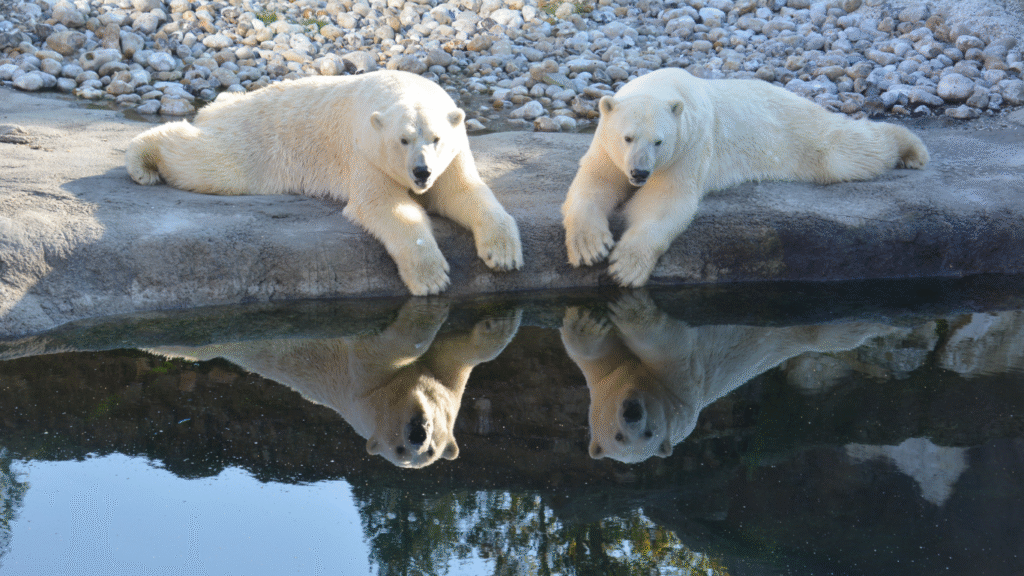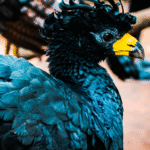The polar regions, Arctic in the north and Antarctic in the south, are icy homes to unique animals built for freezing cold. From polar bears roaming Arctic ice to penguins waddling in Antarctic snow, these creatures thrive in harsh conditions. Thick fur, blubber, and clever behaviors help them survive. In 2025, climate change threatens their icy habitats, making their stories vital.
Arctic Animals and Their Lives
The Arctic, around the North Pole, hosts animals like polar bears, Arctic foxes, and walruses. These creatures roam sea ice, tundra, and chilly waters, facing temperatures as low as -40°C, per nationalgeographic.com. Their thick fur or blubber keeps them warm, per worldwildlife.org. Polar bears hunt seals on ice, while Arctic foxes scavenge leftovers, per britannica.com. In 2025, shrinking ice due to warming, down 13% per decade, endangers them, per nasa.gov. Studying these animals shows their strength and the urgent need to protect their frozen home.
Polar Bears: Ice Hunters
Polar bears, the Arctic’s top predators, weigh up to 700 kg and hunt seals from sea ice, per worldwildlife.org. Their white fur hides them, and padded paws grip ice, per nationalgeographic.com. They swim 100 km for food, per britannica.com. In 2025, melting ice forces them to travel farther, with only 15,000-19,000 left, per iucnredlist.org. Protecting ice habitats is key to their survival, per nasa.gov, ensuring these giants roam the Arctic.
Arctic Foxes: Clever Survivors
Arctic foxes, with fluffy white fur, live on tundra, eating lemmings or scraps, per nationalgeographic.com. Their fur changes to brown in summer for camouflage, per britannica.com. They dig dens to stay warm, per worldwildlife.org. In 2025, fewer prey due to warmer winters threatens them, though their numbers are stable, per iucnredlist.org. Their adaptability inspires hope, but conservation is vital, per nasa.gov, to keep their clever ways alive.
Antarctic Animals and Their World
Antarctica, the southern icy continent, is home to penguins, seals, and whales. No land mammals live here, only sea and air creatures, per nationalgeographic.com. Sub-zero waters and snowy coasts shape their lives, with blubber or feathers for warmth, per britannica.com. Emperor penguins huddle against -60°C winds, while krill feeds many, per worldwildlife.org. In 2025, warming oceans, up 0.5°C since 1990, harm krill, per nasa.gov, threatening food chains. These animals show nature’s toughness in a fragile, icy land.
Emperor Penguins: Winter Warriors
Emperor penguins, the tallest at 1.2 meters, breed in Antarctica’s winter, per nationalgeographic.com. Males guard eggs in -60°C, huddling for warmth, per britannica.com. They dive 500 meters for fish, per worldwildlife.org. In 2025, shrinking ice shelves, down 20% in 50 years, risks colonies, with 250,000 left, per iucnredlist.org. Saving ice is crucial, per nasa.gov, to protect these brave birds’ icy nurseries.
Weddell Seals: Deep Divers
Weddell seals, weighing 400-600 kg, live under Antarctic ice, diving 600 meters for fish, per nationalgeographic.com. Their blubber and whiskers help in dark waters, per britannica.com. They chew ice holes to breathe, per worldwildlife.org. In 2025, warmer seas reduce ice cover, affecting 200,000-800,000 seals, per iucnredlist.org. Preserving sea ice ensures their survival, per nasa.gov, keeping these divers safe in their frozen home.
Adaptations for Polar Survival
Polar animals have special traits to beat the cold. Thick blubber, like in seals, or dense fur, like in foxes, traps heat, per nationalgeographic.com. Small ears and tails reduce heat loss, per britannica.com. Penguins’ black-and-white feathers absorb sun or hide them, per worldwildlife.org. Polar bears’ hollow fur reflects light, blending with snow, per nasa.gov. In 2025, these adaptations amaze us, but warming climates challenge their survival, making conservation urgent to protect their clever ways.
Insulation and Warmth
Blubber, up to 30 cm thick in seals, and fur, like polar bears’ two-layered coat, keep animals warm, per nationalgeographic.com. Arctic foxes’ furry paws act like boots, per britannica.com. Penguins’ overlapping feathers trap air, per worldwildlife.org. In 2025, these natural heaters help in -50°C, but thinner ice



